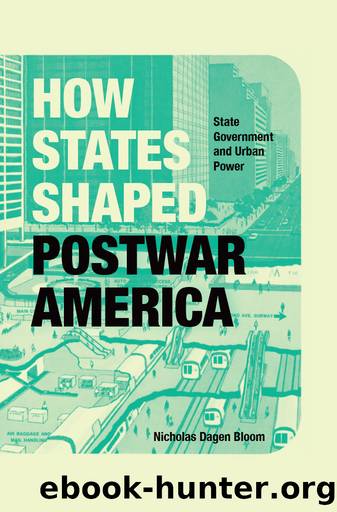How States Shaped Postwar America by Nicholas Dagen Bloom;

Author:Nicholas Dagen Bloom; [Bloom, Nicholas Dagen]
Language: eng
Format: epub
Publisher: University of Chicago Press
A Secret Romance: CUNY and the State Government
State aid, as in other American cities, proved transformative in New York City for the quality and scale of urban higher education from the 1970s to the present. When the stateâs budget crisis subsided in the 1980s, the cash spigot sputtered back on. In the decades that followed, CUNY would reassert selectivity in its senior colleges, maintain low tuition, sustain new campuses with minority focus (such as Medgar Evers and York Colleges), and mount a major faculty research program. Steady state support has similar effects on downtown state colleges across the nation, from Wayne State in Detroit to Georgia Tech in Atlanta.
The senior colleges have enviable regional reputations today and are highly competitive. The campuses are expanding and modern and remain anchors of their respective neighborhoods, including Harlem (City College of New York) and the flatlands of Brooklyn (Brooklyn College). The current system has 270,000 degree-seeking students and an $8 billion economic impact; 60 percent of students attend tuition-free (and more will soon because of newly created Excelsior scholarships from the state), 85 percent stay in New York City (adding educated citizens to the labor market), and merely maintaining the campuses requires hundreds of millions in annual construction spending. The senior colleges justly celebrate their success in securing upward mobility for its students and are today 75 percent minority.31
Not all these changes are the result of state or city investments. As in the early twentieth century, the systemâs reputation benefits from highly competitive immigrant children, now more often from Asia, South America, and Africa than Europe. Nor has the return of competitive entry at CUNY senior colleges been warmly welcomed by all activists. The remigration of higher-income, higher-achieving students into the senior colleges and the concentration of poorer students in the community college system mirror somewhat the situation during the Rockefeller years. Community college students benefit from fewer resources, and the graduation rates are very low compared to the senior colleges. Low community college graduation rates have in recent years led to experiments like Guttman Community College, which provides a smaller, more supportive environment.
The depth of state subsidy to CUNY will probably surprise most New Yorkers. CUNY now includes 7 community colleges, 11 senior colleges, and 4 professional/graduate schools. In 2017, Albany provided $1.2 billion in direct aid to CUNY senior colleges, which represented 60 percent of their funding, a figure higher than the 40 percent SUNY schools get from direct state funds. The state also guarantees the bonds of the City University Construction Fund, makes available building programs through the State Dormitory Authority, and provides hundreds of millions more in financial aid and debt service payments. The city, by contrast, provided a paltry $30 million for the senior colleges in 2016. The state also underwrites New Yorkâs impressive network of community colleges, most of which have expanded during the past four decades.32
Download
This site does not store any files on its server. We only index and link to content provided by other sites. Please contact the content providers to delete copyright contents if any and email us, we'll remove relevant links or contents immediately.
The Secret History by Donna Tartt(16677)
The Social Justice Warrior Handbook by Lisa De Pasquale(11495)
Thirteen Reasons Why by Jay Asher(7808)
This Is How You Lose Her by Junot Diaz(5804)
Weapons of Math Destruction by Cathy O'Neil(5056)
Zero to One by Peter Thiel(4841)
The Myth of the Strong Leader by Archie Brown(4796)
Promise Me, Dad by Joe Biden(4461)
Beartown by Fredrik Backman(4444)
How Democracies Die by Steven Levitsky & Daniel Ziblatt(4427)
Stone's Rules by Roger Stone(4426)
The Fire Next Time by James Baldwin(4356)
100 Deadly Skills by Clint Emerson(4093)
A Higher Loyalty: Truth, Lies, and Leadership by James Comey(4044)
Rise and Kill First by Ronen Bergman(4026)
The David Icke Guide to the Global Conspiracy (and how to end it) by David Icke(3900)
The Farm by Tom Rob Smith(3883)
Secrecy World by Jake Bernstein(3793)
The Doomsday Machine by Daniel Ellsberg(3743)
